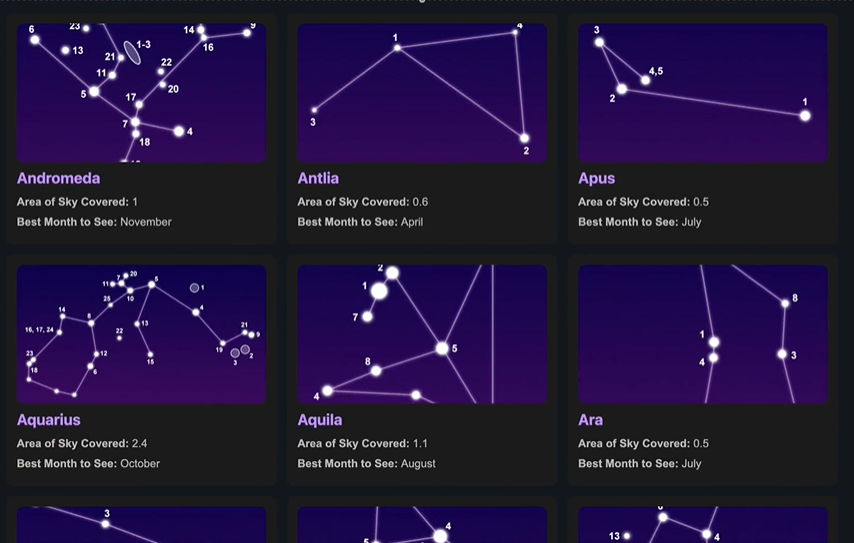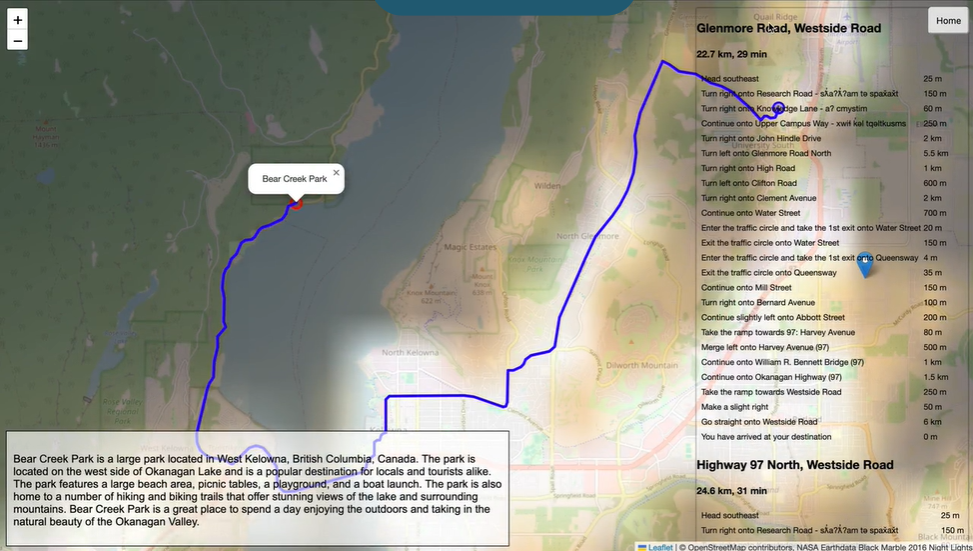Identify Constellations

The backbone feature of Hello, Stars! is the ability to identify constellations based on user-uploaded pictures. To log a constellation in the app, users take a picture of the night sky where they believe a constellation is. Constellations are accurately detected in user photos through RoboFlow, a computer vision tool. Users are rewarded for uploading pictures that contain constellations, as well as correctly guessing which constellation is in their picture. Rewards come in the form of points, and progress towards badges which can be displayed on a users profile.
Learn

All 88 constellations are featured on the learn page. For every constellation, users can read up on a bit of history and interesting statistics like the constellations brighest star, the best month to view it (based on northern hemisphere), and what it represents. Information about the constellations was sourced from:
Sleepopolis,
IAU,
Wikipedia,
Royal Museums Greenwich,
Britannica,
LPI,
Space.com,
Constellation Guide.
Compete with friends

Users profiles display important statistics like the number of constellations found, nights spent stargazing, and 3 badges of the users choice. Users can visit their friends pages to check out their stats and badges by clicking the 'View friend list' button, and selecting which friend to visit. A healthy spirit of competition encourages users to go out and stargaze, without being overly competitive and making users feel bad for not going out.
Collect badges
One of the primary ways Hello, Stars! incentivizes users to stargaze is through collecting badges. Badges are awarded for viewing specific constellations on different nights, and have different tiers (bronze, silver, and gold) associated with them. Higher tiers of badges are unlocked after viewing constellations repeatedly. For example, a user could aquire the bronze little dipper badge after viewing the little dipper once, but to unlock the gold little dipper badge, they would need to view it on many different nights, encouraging them to make a habit out of stargazing.
Light pollution map

Hello, Stars! includes a global map overlaid with light pollution levels, so users can quickly and easily find the best places to stargaze. Additionally, users can get directions to anywhere on the map, and save their favourite locations to visit again. The directions feature was implemented using Leaftlet API, and the global light pollution map uses NASAs Black Marble night light dataset.